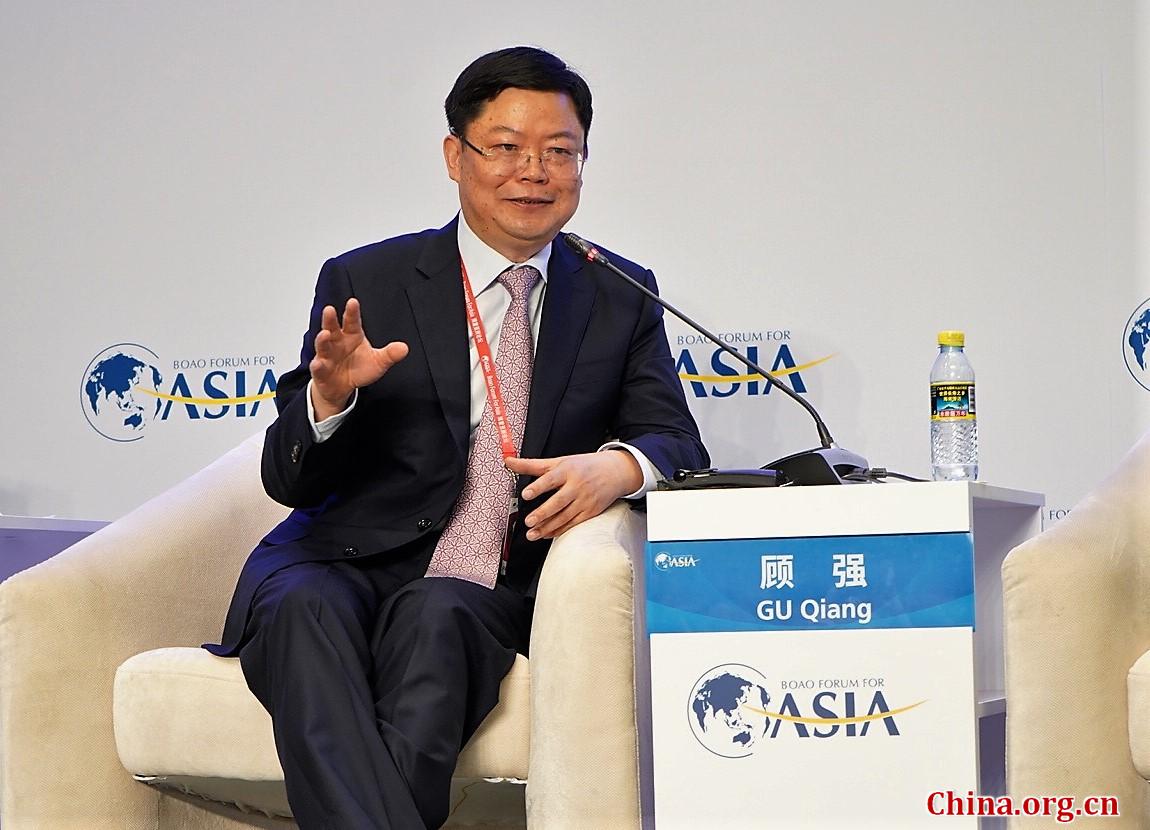
In order to promote the high-quality development of its metropolitan areas, China needs to optimize the structure of these areas through the building of micro-centers and node cities, said Gu Qiang at a sideline forum of the Boao Forum for Asia on March 27. Gu is the head of the Industry Research Institute under the Shanghai-listed China Fortune Land Development (CFLD) Co Ltd, the operator of the Gu'an "new industry city".
China's metropolitan areas have seen significant development in recent years. The growth of the Beijing-Tanjin-Hebei region, the integration of the Yangtze River Delta area, and the construction of the Guangdong-Hong Kong-Macao Greater Bay Area are all key examples. These areas are fast becoming key pillars of China's economic growth and as a result, regional development in metropolitan areas has become one of the hot topics at the Boao Forum for Asia (BFA) Annual Conference 2019.
Metropolitan areas are regions which surround a big city and are within an hour's commute. Because of the growing population in these regions, micro-centers and node cities have become critical parts of the metropolitan areas. After decades of rapid growth, China's metropolitan areas are finally taking shape in terms of population growth, employment, commuting, spatial expansion and industrial connections. The Beijing metropolitan area, for example, is home to more than 360,000 people who are working in Beijing. In the Shanghai metropolitan area, there are 5, 12, and 10 node cities with populations of over one million, 200,000 to one million, and 50,000 to 200,000 respectively.
When comparing the scale of Beijing's micro-centers and node cities with that of Tokyo's, Gu concluded that the number of China's micro-centers and node cities are far smaller than those of the metropolitan areas in developed countries.
"Rather than planning the urban system in accordance with the local administrative region, the metropolitan areas should be planned as a whole," Gu noted, adding that "In order to promote the high quality development of the metropolitan areas, we must first integrate the surrounding micro-centers and node cities into our metropolitan area planning."
According to the guidelines issued by China's National Development and Reform Commission (NDRC) last month, the country aims to build several metropolitan areas that can become global models of development by 2035. Gu believes that the way to ensure the projects' success is to allow the market to play a leading role, under the guidance of the government.
Due to government deleveraging, the financing channels for the development of metropolitan areas have been reduced. Gu suggested looking into ways to increase financing channels through innovative methods.
"We should encourage social capital to participate in the development of metropolitan areas through the Public-Private-Partnership (PPP) model, asset securitization, financial leasing and other channels. Such practices can not only reduce the government debt risk, improve the development of metropolitan areas, but can also improve the level of urbanization in peripheral areas," said Gu.
Speaking on the specific functions of the micro-centers and node cities, Gu cited examples of high-tech industries, airport-related industries, and healthcare services. He also mentioned comprehensive new urban areas such as the Gu'an New Industry City.
He further explained that under the explorational PPP model, with Gu'an as a typical case, social capital is responsible for the planning, design, construction, industrial development, and urban operation of the city. The government, on the other hand, is responsible for the top-level design, administrative approval, and public service supervision, etc. He added that this structure of cooperation won't add to government debt. After the period of cooperation is over, all public infrastructure and services will be handed over to the government, which is an innovative evolution of the PPP model.
Jia Kang, chief economist with the China Academy of New Supply-side Economics, also noted the CFLD's innovative way of developing industrial clusters.
"Mechanism innovation is a premise to ensure equitable access to basic public services. The CFLD has done an impressive job in this aspect. With its cooperation with local government, industrial clusters with high production capacity and well-developed transportation system can emerge within a dozen years. Such win-win cooperation merits our reference and study," Jia said.
